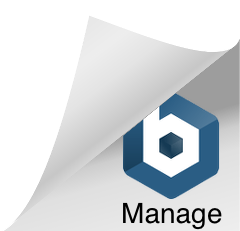It is no secret that organizations seeking growth are interested in improving financials; especially during constrained times. Efficiency and productivity are examples of outcomes that can be positively managed to create organizational return to stakeholders. This is true for non-profit business models as well. What is less known, or at least considered, is what helps drive this efficiency, productivity and other modes of growth.
Engagement as an outcome of purpose
“In a world of relentlessly rising demand, employers need to shift from trying to get more out of people to investing more intentionally in meeting their core needs. If we have no sense that the work we’re doing taps our strengths and our preferences, or provides us with a sense of meaning, we’re likely to be less engaged and productive at work.” Tony Schwartz , The Energy Project
Having purpose in one’s work creates engagement. Having the energy, information, development and support also contribute to engagement. Engagement fosters personal outcomes. Individual contribution impacts overall organizational performance, including growth and customer engagement. In this integrated sequence, engagement acts as an outcome at the individual level that works as a lever to help organizations thrive.
What is telling about our business culture today is that a significant percentage of employees around the globe are not engaged or actively disengaged with their work. We must be open to create paths for the inputs that drive engagement. We must challenge our own leadership style to create environments that honor the individual and their purpose.
Tapping untapped value
While most organizations have a mission statement, most do not integrate their mission into all they do and deliver. This disconnect only partially addresses the focus needed to tap individual connection. It is a place to start, but not the place for meaningful change. Each individual should be encouraged to have a sense of purpose, or personal mission, from which they create, support and respond to. In turn they will yield value to the organization. Value that is created through leadership, customer service, creativity, loyalty, wellbeing and so on.
Yet, organizations often do not formally consider the value potential in the above mentioned attributes along with other ways in which human create value. Nor do they formally recognize the cost of untapped talent, unrealized innovation and lack of leadership readiness amongst employees.
In today’s knowledge and social driven economy, human capital is still often considered the largest cost within organizations. This cost typically stems from employee salary. Again, this is another disconnect that creates barriers to reflecting true organizational value and employee value creation. The bottom line is that the majority of value humans create in organizations is not reflected in the bottom line. Nor do organizations understand or support what drives this value creation.
Is your organization ready?
We are energized by the emerging research and thought leadership surrounding a more holistic approach to understanding organizational human capital and a human-centric approach to strategy. Our research across the past three years confirms that in “hiring the whole human” you consider and treat people as real value creators. Purpose is the “glue” that connects the key human attributes that help drive growth within organizations.
Can every employee say:
Why they do what they do?
Why they are there?
Why they stay?
Why they contribute?
Why they wanted to work there in the first place?
Is your organization positioned to reply:
We are prepared for the answers.
We are committed to our mission/purpose.
We look at people (not roles) we want in our organization.
We center our employees in all corporate decision-making.
We aim to build a culture of retention, innovation with clear linkage to our growth long term.
As leaders we must facilitate this dialogue amidst a workplace construct that has historically resisted it. Is your organization ready to take this on?


